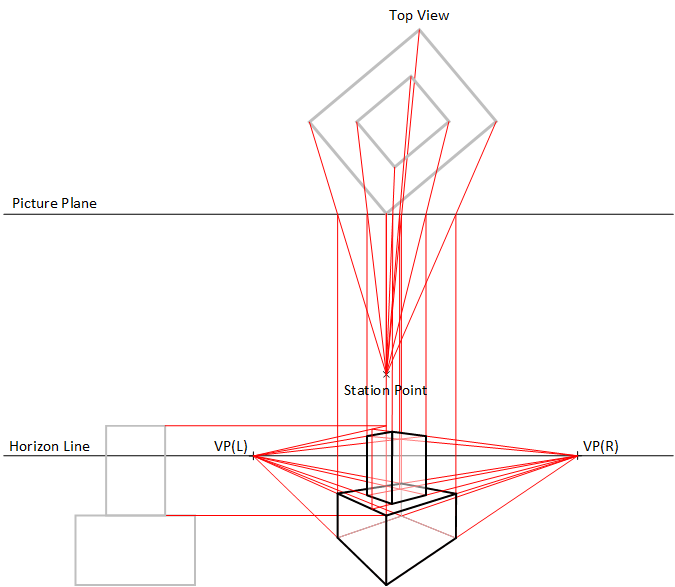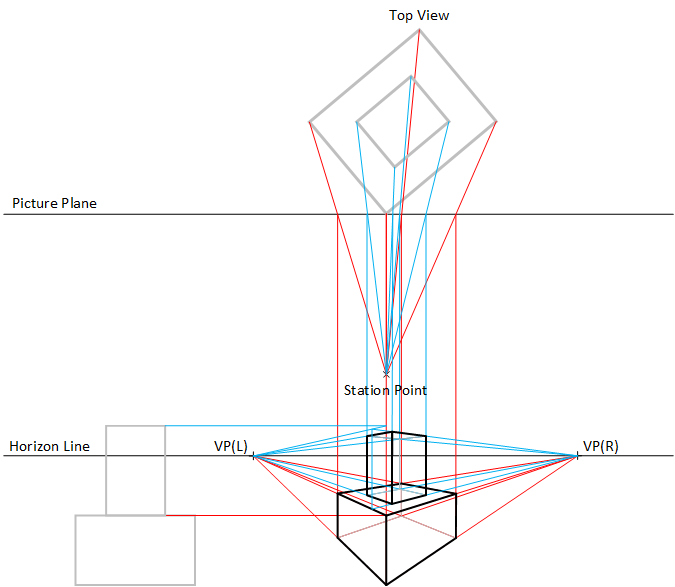Drawing Tips
Housekeeping
Over time, as you add more detail to your perspective, your drawing will become increasingly cluttered with construction lines. As a practical matter, its best if you erase construction lines as soon as they’re no longer needed.
Sequencing (Should I draw things Front to Back or Back to Front?)
Sometimes it’s useful to start your perspective by drawing the objects and surfaces that are closest to the observer and then to draw objects that are progressively more distant. Working this way allows you to identify overlapping objects and surfaces which can potentially save you some time since you can avoid drawing features that are hidden from view. At other times however, its useful to draw objects and surfaces from back to front. That way, you’re guaranteed not to miss anything. Everything you see in plan will be represented in your perspective.
Drawing Strategies
Illustrators use two different (often competing) strategies to draw perspectives. In the first (let’s call it the “Kitchen Sink” method), all required construction lines for the entire perspective are drawn before object corners and surface edges are identified and visually highlighted. In the second (let’s call it the “String of Pearls” strategy), illustrators only draw the construction lines for one object at a time. The only construction lines on the page at any given moment are associated with the one object or surface that’s currently under construction. New construction lines are added only after previously drawn surfaces have been defined and their associated construction lines erased. Drawing single objects or surfaces, tends to minimize visual clutter on the page.
Keeping Track of Corners
Tag the corners of every object shown in plan and elevation with a unique identifier (i.e. a number or letter). This will help you sort through the jumble of construction lines to pinpoint the exact location in perspective space of each corner and surface edge.
Color Code your Construction Lines
Some illustrators find it useful to color code their construction lines. You can do this two different ways: Lines can be color coded by function (i.e. each type of line is drawn in a different color). This is most often used in the “Kitchen Sink” method. Alternatively, construction lines can be color coded by object (i.e. all the construction lines associated with a specific object or surface are drawn in the same color). This approach is most often used in the “String of Pearls” construction method. Both strategies work equally well provided of course that you don’t mix them in the same drawing.
“Kitchen Sink” color coding
“String of Pearls” color coding


